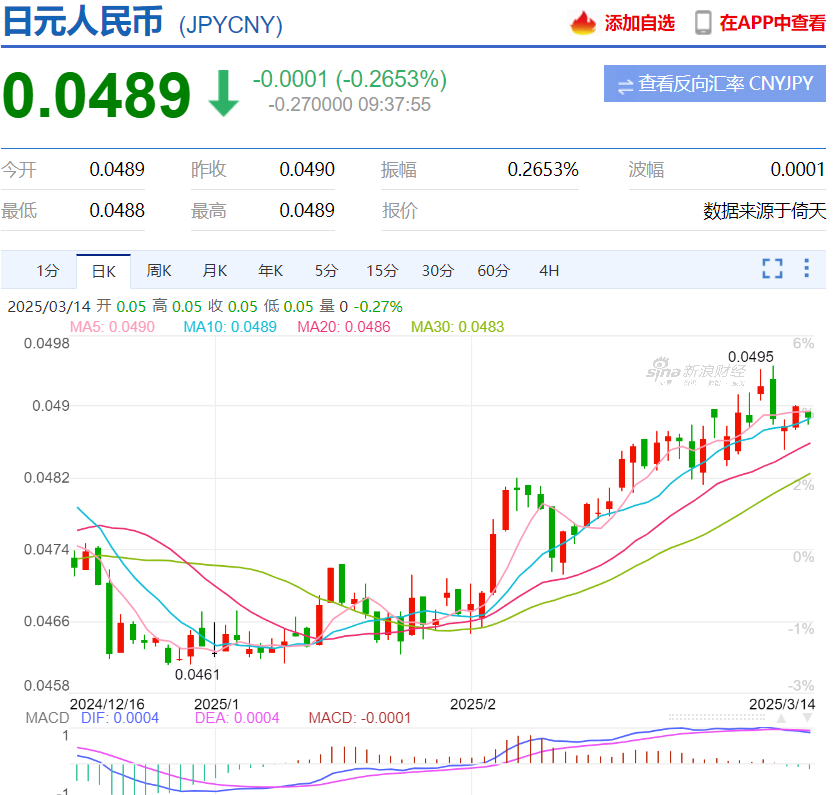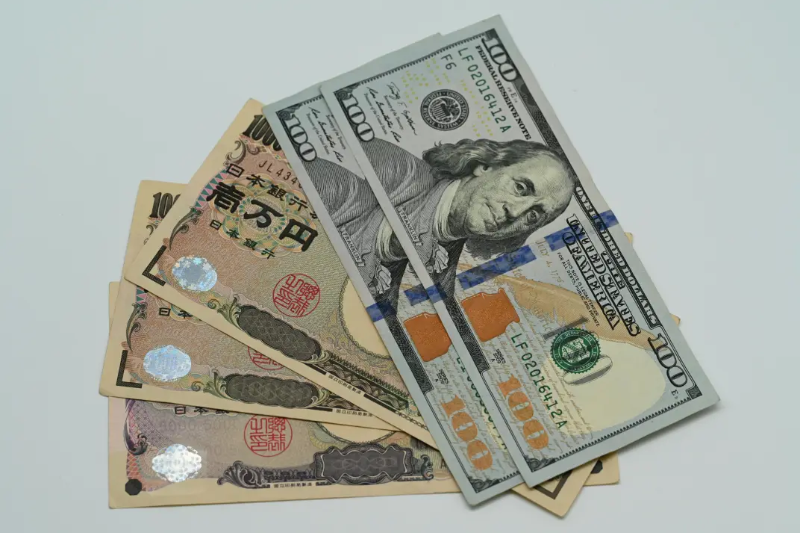Is JPY rate going to be even higher?
Jennifer Johnson - 2025-03-14 13:20:05.0 283

Recently the trend of JPY rate has raised attention from global financial market.
Since February, the JPY has gathered a great momentum to go up and continued this spirit after the beginning of March.
On March 10th, JPY to RMB has reached 0.0491.At present, the Japanese yen exchange rate has slightly fallen, opening at 4.89 on March 14th.

Why dis this happen and will this phenomenon continue?

The reason of JPY rate going up
1. A better off Japan economy
In the 4th quarter of 2024, annual growth of Japanese GDP reached 2.8% while enterprise equipment investment bouncing back, personal consumption still looking not dynamic enough with the actual consumption dropping 0.1% YOY. Under this circumstance, salary promotion is regarded as a key to consumption renaissance.
On March 6th, Rengo, the largest union of Japan said that it’s members asked for a 6.09% salary promotion on average this year, which is the new high since 1993, higher than 5.85% last year.
Sustained wage growth can lead to rising prices, which in turn can drive good economic growth. Market expectations for the Bank of Japan to raise interest rates have increased, and the attractiveness of the yen in the foreign exchange market has increased significantly, further driving the appreciation of the yen.

2. A weakening USD
This wave of strong rebound of the yen is inseparable from the impact of the slowdown in the US economy.
Since February, the overall momentum of the US economy has weakened. The number of non-farm payrolls in the United States increased by 151,000 in February, slightly lower than market expectations, and the unemployment rate hit a new high since November last year.
Such economic data performance has shaken the market's confidence in the US economic recovery. The slowdown in economic growth may cause the Federal Reserve to be more cautious in monetary policy and reduce expectations for interest rate hikes, thereby reducing the attractiveness of the US dollar and promoting the appreciation of the yen.
3. Support for the yen from risk aversion demand
As a traditional safe-haven currency, the yen is often sought after when market panic or uncertainty rises. Against the backdrop of escalating global trade protectionism, the yen has become more attractive.
Recently, global geopolitical risks have intensified. China-US trade frictions, tensions between Russia and Ukraine, and geopolitical conflicts in the Middle East have exacerbated market risk aversion, driving investors to buy yen in the short term for risk aversion, pushing the yen up.


Future trend of the yen
The current appreciation of the yen is essentially the result of the shift in monetary policy, the narrowing of the US-Japan interest rate differential and the resonance of risk aversion demand, but its sustainability is subject to the contradictions in Japan's economic structure and external policy shocks.
In the future, the trend of the yen will still be affected by a combination of factors such as US economic data, the monetary policy of the Bank of Japan and global market risk preferences. If the weakening of the US economy leads to a decline in US bond yields and a narrowing of the US-Japan interest rate differential, it will support the further appreciation of the yen; at the same time, any new risk aversion events may drive the yen to strengthen rapidly.
At present, the market expects that the Bank of Japan will discuss whether to raise interest rates at the meeting in April-May, and the results of the salary negotiations in the "Spring Fight" are likely to become the key variable in determining the direction of Japan's monetary policy.
In the short term, if the Bank of Japan raises interest rates faster than expected, coupled with the implementation of the Fed's interest rate cut, the yen may continue to rise.
Exchange rate fluctuations are unpredictable. Panda reminds everyone that if there is a need for currency exchange in the near future, you should seize the opportunity, choose the time to exchange currency, and flexibly respond to the impact of exchange rate changes.
Panda Remit, the choice of millions of users worldwide, provides safer, more convenient, more reliable and more affordable cross-border remittance services.
It now covers more than 50 countries/regions and dozens of currencies, and supports more than 500 banks and major wallets such as Alipay, WeChat and PayPal.
Panda Remit can meet your multiple remittance needs, including global remittance, large-value remittance, remitting RMB from China and tuition payment.
Panda Remit offers the industry's best exchange rates and lowest fees to ensure the safety of your funds, and have been certified by PCI DSS. With our global presence and regulatory compliance, you can enjoy a convenient service 24/7 during the remittance process.
Visit Panda Remit website/APP to enjoy the new experience of global remittance, more money arriving at faster speed!



